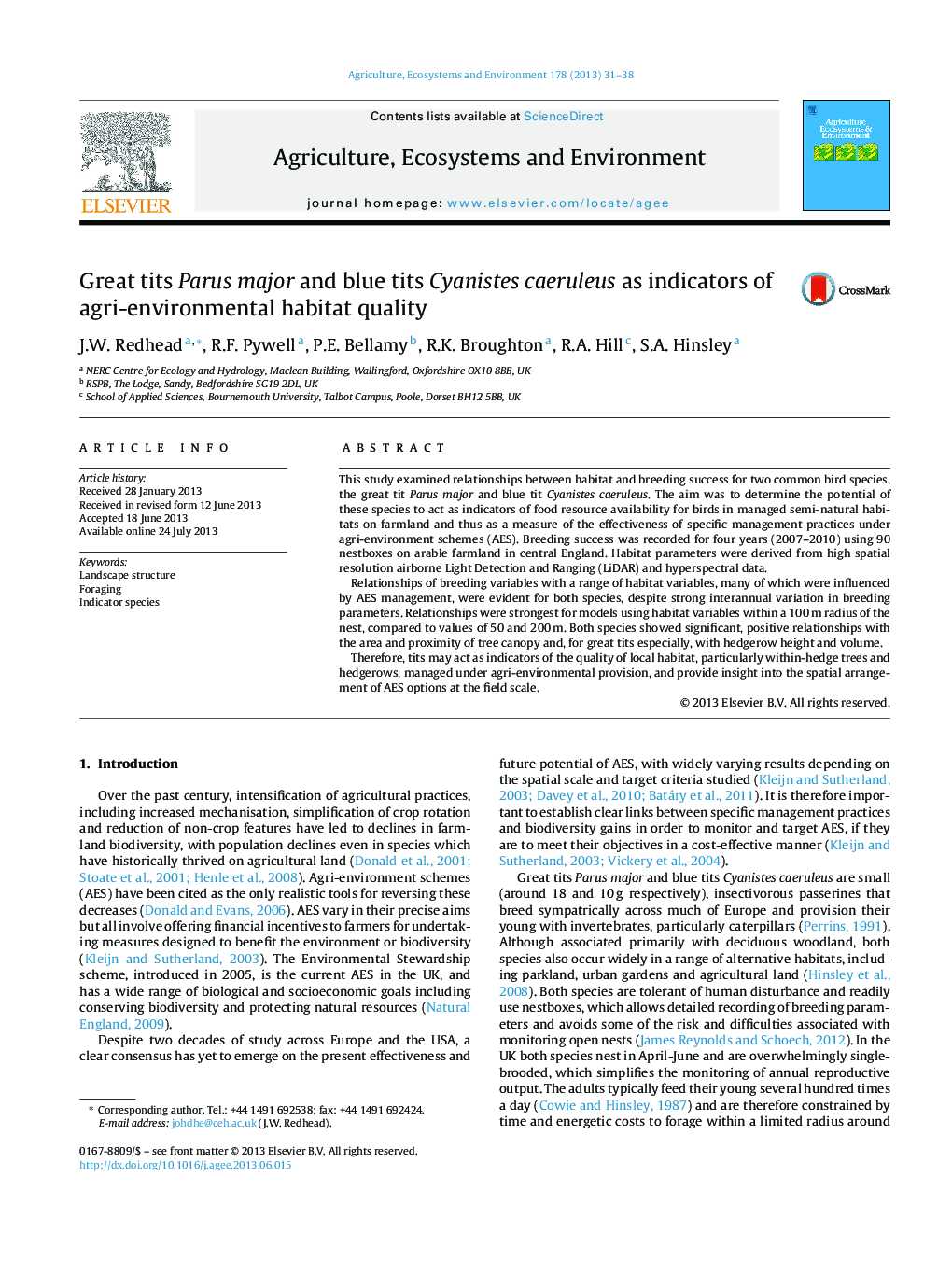| کد مقاله | کد نشریه | سال انتشار | مقاله انگلیسی | نسخه تمام متن |
|---|---|---|---|---|
| 2414222 | 1552074 | 2013 | 8 صفحه PDF | دانلود رایگان |

• Habitat within 100 m of the nestbox was most influential on breeding success.
• Breeding success was related to extensive tree canopy and tall hedgerows.
• Tits may be useful indicators of quality for specific agri-environmental managements.
This study examined relationships between habitat and breeding success for two common bird species, the great tit Parus major and blue tit Cyanistes caeruleus. The aim was to determine the potential of these species to act as indicators of food resource availability for birds in managed semi-natural habitats on farmland and thus as a measure of the effectiveness of specific management practices under agri-environment schemes (AES). Breeding success was recorded for four years (2007–2010) using 90 nestboxes on arable farmland in central England. Habitat parameters were derived from high spatial resolution airborne Light Detection and Ranging (LiDAR) and hyperspectral data.Relationships of breeding variables with a range of habitat variables, many of which were influenced by AES management, were evident for both species, despite strong interannual variation in breeding parameters. Relationships were strongest for models using habitat variables within a 100 m radius of the nest, compared to values of 50 and 200 m. Both species showed significant, positive relationships with the area and proximity of tree canopy and, for great tits especially, with hedgerow height and volume.Therefore, tits may act as indicators of the quality of local habitat, particularly within-hedge trees and hedgerows, managed under agri-environmental provision, and provide insight into the spatial arrangement of AES options at the field scale.
Journal: Agriculture, Ecosystems & Environment - Volume 178, 15 September 2013, Pages 31–38